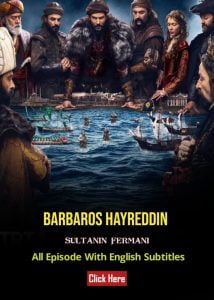Kurulus Osman Episode 70 English Subtitle
Kurulus Osman Episode Season 3 70 Bangla Subtitle
04. THE DEFINITIVE ESTABLISHMENT OF THE OTTOMAN EMPIRE, 1453–1526
For half a century after Timur’s invasion, the Byzantine Empire was able to hold out against the Ottomans by manipulating Ottoman pretenders and the threat of crusades. While Mehmed II attacked Karaman, Byzantine ambassadors gained a few concessions by threatening to free the pretender Orhan.
On 12 December 1452, the first ceremony performed in accordance with the agreement on Church unity was held in the Hagia Sophia, in the emperor’s presence; this was as much as anything a demonstration of unity against the Ottomans. External and internal reasons forced Mehmed to conquer the city immediately.
Kayifamilytv Kurulus Osman Episode 70 English Subtitle
To counter their suspicions, Çandarl had signed treaties with Hungary and Venice. When Venice sent her fleet in May 1453, time was running short. Before laying siege to the city, the Conqueror gained control of the Bosphorus by building the fortress of Rumeli Hisar on the European shore, opposite Anadolu Hisar, the fortress which his grandfather, Bâyezîd, had built. Kurulus Osman Episode 70 English Subtitle
All ships required his permission to pass through the Bosphorus. The siege of Constantinople lasted fifty-four days, from 6 April to 29 May 1453. The defending force numbered 8,500 men; the regular Ottoman army numbered not less than fifty thousand. The Conqueror battered the city with cannons larger than any that had yet been seen. The storming of the city walls, the strongest fortifications of the Middle Ages, was a victory for these modern weapons.
Kayifamily tv Kurulus Osman Episode 70 English Subtitle
Ottoman and Western sources agree that the Turks entered the city in a general attack through a breach in the walls opened by a cannon. A company of Genoese mercenaries formed the defenders’ main regular force, and when the Genoese commander, Guistiniani-Longo, was wounded and fled to his ship, the defenders’ morale collapsed.
The Venetian bailo and the Ottoman pretender, Orhan, took part in the defence of the walls. During the siege, many of the Greek troops returned home in the pay of the emperor, and conflict broke out between the Italians and the local Greeks.
Kayifamilytv Kurulus Osman Episode 70 English Subtitle
In the Ottoman camp, the dispute continued between Çandarl, who maintained that the siege would not be successful and should be raised immediately, and the sultan and the military group whose future depended upon its success. The conflict again came into the open at a council of war, held when news came that Venice and Hungary had mobilized their forces. Kurulus Osman Episode 70 English Subtitle
Kayifamilytv Kurulus Osman Episode 70 English Subtitle
When the emperor refused to surrender, the Ottomans planned a final assault for 29 May. Zaganos organized the preparations for the attack. On the morning of 29 May, overcoming all resistance, the Ottoman army entered the city through a breach in the wall. The sultan did not wish for the sack of his future capital, but the Religious Law required him to grant three days of pillage.
The city had been taken by force, and, according to the şerîat, the movable property was the lawful booty of the soldiers, and the population could be legally enslaved. On the first day of the conquest, Mehmed entered the city in procession, stopped the pillage, went to the Hagia Sophia, and prayed. He converted the church into a mosque and proclaimed, ‘Hereafter, my capital is Istanbul.’
Osman Online Kurulus Osman Episode 70 English Subtitle
1 The young conqueror now sat on the throne of the Caesars. His conquests in the Holy War surpassed those of all other Muslim sovereigns, and he saw in himself limitless authority. Immediately after the conquest, Çandarl was arrested, charged with treason, and executed, leaving the power in the hands of his rivals.
To suppress rival claims to the throne, such as having endangered the unity of the empire for half a century, Mehmed the Conqueror found and executed Orhan and had his younger brother, Ahmed, strangled. In the following quarter century, the Conqueror undertook one campaign after another, establishing a centralized empire in Rumelia and Anatolia.
Osmanonline Kurulus Osman Episode 70 English Subtitle
No evidence supports the claim that his conquests followed a predetermined plan. Still, he did claim to be the legitimate ruler of all the former territories of the Eastern Roman Empire since he now possessed the Byzantine throne. Pius II maintained that for his claim to be legitimate he would have also to be a Christian.
2 According to the contemporary writer Ibn Kemâl, the Conqueror adopted the principle of executing any Greek of royal blood with a claim to sovereignty. Mehmed fully understood the strategic importance of Istanbul, believing that if he stationed his fleet in Istanbul, he could rule the world.
Osman online Kurulus Osman Episode 70 English Subtitle
3 Just as he had blockaded the Bosphorus in 1452 by building the fortress of Rumeli Hisar, in 1463, he brought the Dardanelles under his control by constructing two fortresses at Çanakkale on either side of the straits. By fortifying Bozcaada (Tenedos), he further strengthened this system of defense which safeguarded Istanbul and the straits from attack and secured communications between Anatolia and Rumelia. In the 1470s, the war fleet grew from thirty to ninety-two galleys.
In 1454 the Ottoman fleet sailed into the Black Sea, compelling all the governments on its shores – the Genoese colonies, the Comnene kingdom of Trebizond and Moldavia – to pay tribute in recognition of Ottoman suzerainty. The Ottomans established the Danube as the empire’s natural northern frontier. It became the Conqueror’s policy to prevent any foreign state from establishing itself in the Balkan peninsula south of the Danube and to annex any that already had a foothold there.
Osmanonline Kurulus Osman Episode 70 English Subtitle
this became evident with the conquest of the Morea in 1460, northern Albania in 1464–79, and Bosnia in 1463. Since there was always a danger that local governments and dynasties would cooperate with the enemy in case of invasion, Mehmed sought to remove all local dynasts from the Balkans by dismissing them with a pension or sending them to remote areas as governors. After the conquest of the Morea, for example, he gave Demetrios Palaeologus a pension of 300,000 akçes.
He was later to eliminate totally the Comneni of Trebizond and the King of Bosnia, whom he considered dangerous. Mehmed’s main task in the Balkans was to undermine Hungarian influence. In 1451 the Despot of Serbia, Branković, with Hungarian aid, seized the Kruševac region, thus extending Hungarian influence across the Danube towards the heart of the Balkans.
Turk Tv Series Kurulus Osman Episode 70 English Subtitle
After the conquest of Istanbul, Mehmed, in four campaigns, brought Serbia into subjection, finally annexing it in 1459. In 1456, however, the Hungarians forced him to abandon the siege of Belgrade. In 1461 the Prince of Wallachia, Vlad Drakul, allied with the Hungarians and attacked the Ottomans on the Danube.
In the following year, the Conqueror replied by invading Wallachia, deposing Drakul in favor of Radul, and thus reducing the Hungarian threat. In the Balkans, Venetian influence threatened Ottoman supremacy in the Morea and Albania. In the Morea, a struggle had broken out between the Palaeologi, Demetrios seeking aid from the Ottomans, and Thomas from the Venetians. The Venetians, meanwhile, had occupied the ports of Argos, Nauplia, Coron, and Modon.
Turk Tv Series Kurulus Osman Episode 70 English Subtitle
Disclaimer:
This video content is provided and hosted by third-party servers and is available on the Internet. Sometimes these servers may contain advertisements. turkeytvseries.com does not host or upload this video content. turkeytvseries.com is neither the owner of this content nor responsible for it.
SERVER-1
/p>
SERVER-2
SERVER-3
SERVER-4












